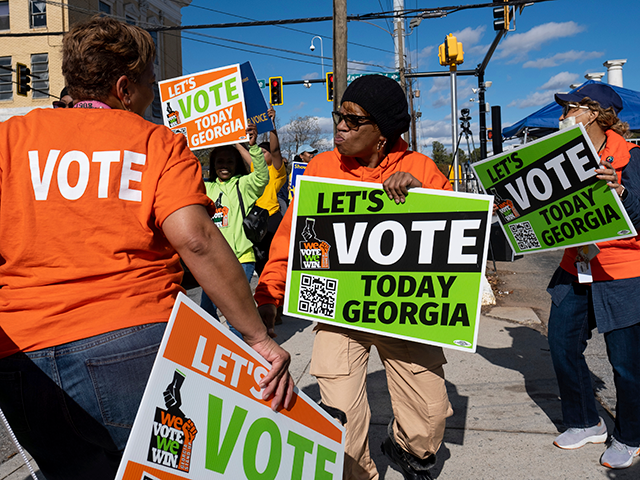Midterm election turnout among black voters appears to be 25 percent lower than white turnout, marking the lowest share of the black electorate since 2006, a New York Times analysis revealed Wednesday.
The low turnout of black voters is a strong indicator Democrats could be losing a key portion of their intersection coalition long heralded by members of the left, such as election denier House Minority Leader Hakeem Jeffries (D-NY), who has claimed the strategy a “gorgeous mosaic” and “not a cult.”
Conclusive numbers have not yet been completely compiled from all 50 states, but an early snapshot of voter data suggests black voter turnout was well below the national average in nearly all of the swing districts and states.
In the states of Georgia, North Carolina, and Louisiana, where the data is authoritative, black voter turnout appears to be at its lowest level since 2006, and 25 percent lower than white turnout:
With the important exceptions of Georgia and North Carolina, the Black population share was below the national average in virtually all of the key districts and Senate contests.
Georgia and North Carolina are two of the states where voters indicate their race when they register to vote, offering an unusually authoritative look at the racial composition of the electorate. In both states — along with Louisiana — the Black share of the electorate fell to its lowest levels since 2006.
…
In all three states, the turnout rate among Black voters was far lower than among white voters. In North Carolina, for example, 43 percent of Black registered voters turned out, compared with 59 percent of white registered voters — roughly doubling the difference from 2018 and tripling the racial turnout gap from 2014.
State data was compared to the citywide data in Philadelphia, Milwaukee, and Detroit, where black voter turnout was 10-12 percent below 2018 data, the Times found. In those same cities, however, overall voter turnout actually increased.
“In areas where Black voters represent a larger share of the population, the turnout sank by more,” the Times concluded.
The data presents interesting questions for political scientists to weigh.
For instance, why did some black voters not turnout? Will the low participation rate among black voters fracture the Democrats’ intersectional coalition? Why did Republicans not retake the Senate, or win more House districts with lower black turnout? Will a return to the pre-Obama-era of lower black turnout become a future trend? How should the political parties recalibrate their outreach to the black community based on comprehensive 2022 data?
Those questions are to be determined.
Follow Wendell Husebø on Twitter @WendellHusebø. He is the author of Politics of Slave Morality.

COMMENTS
Please let us know if you're having issues with commenting.